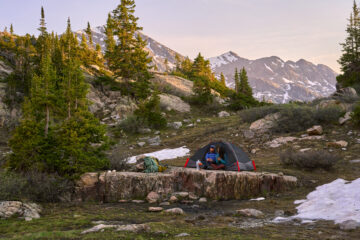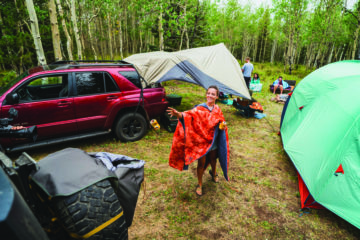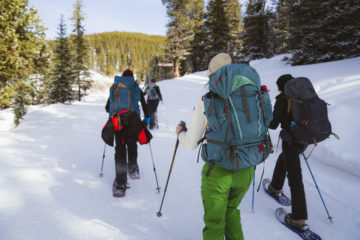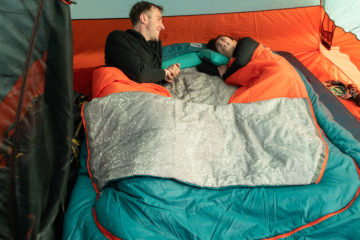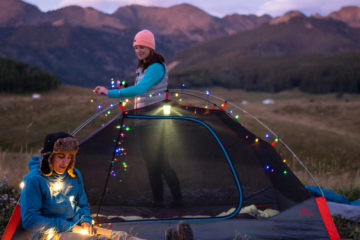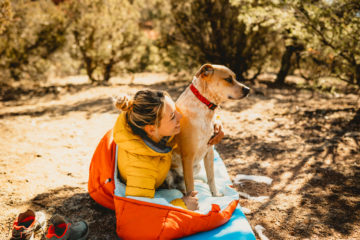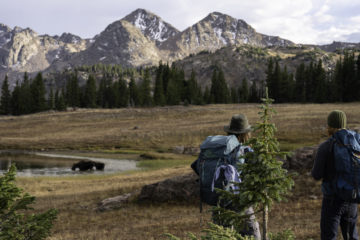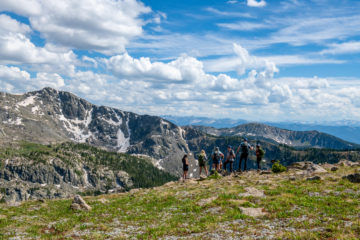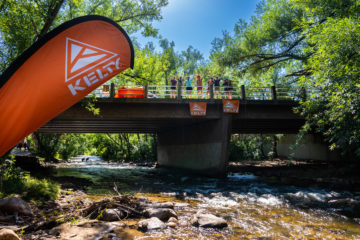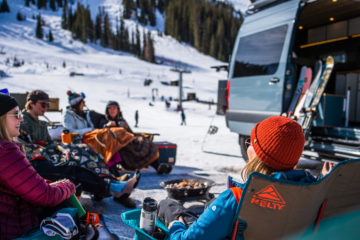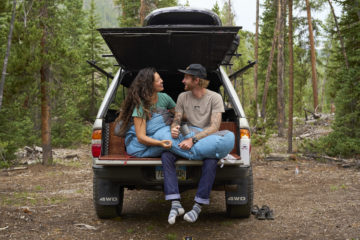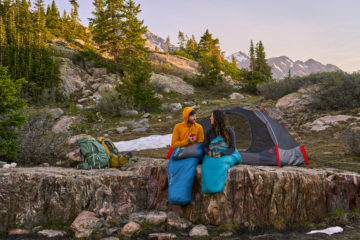How to camp off the grid responsibly.
Folks, it’s FINALLY time to scratch that get-outside itch! The temperature is rising’, those vaxxes are poppin’, and nature-lovers all over the world are scouring the interwebs for that long-awaited First Big Trip. By all accounts, we all should expect campgrounds to be busier than ever this summer—and if that’s your jam, carry on.
But in the event that you’d rather be woken by the gentle kiss of morning sunshine than mercifully just falling asleep when your neighbors pass out at dawn, listen up—this might be a great time to try dispersed camping, which may also be referred to as boondocking, dry camping or primitive camping. Here’s what it is…and what to bring!
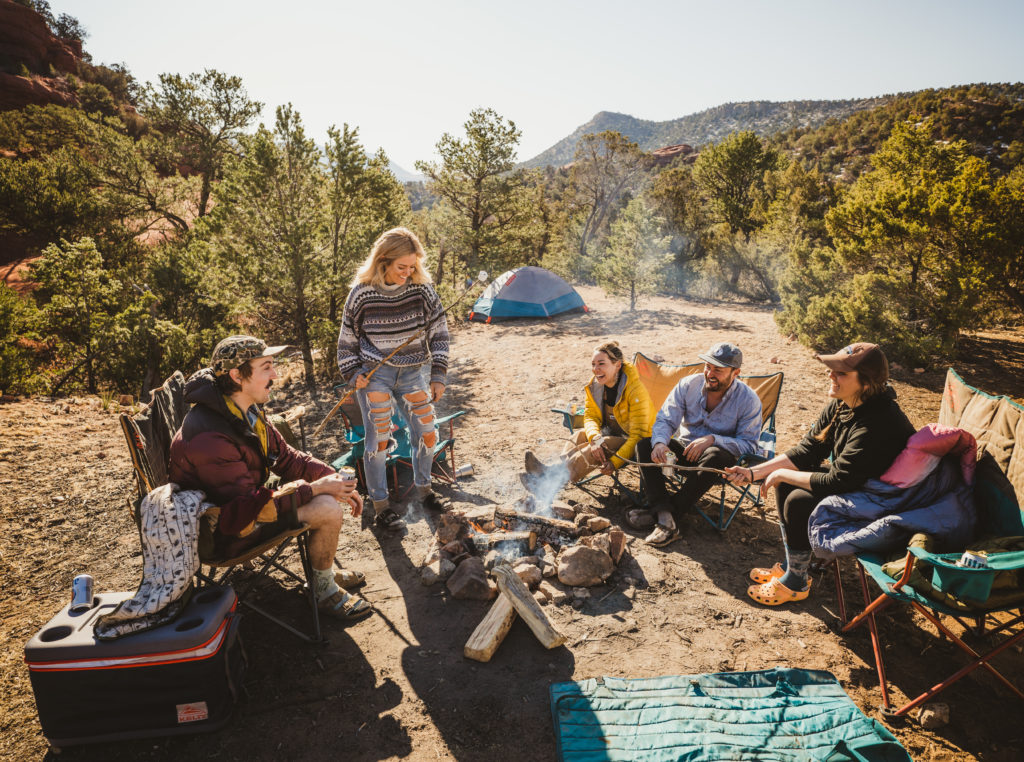
What is Dispersed Camping?
Unlike traditional campground camping, which takes place in a numbered spot for which you have made a reservation, dispersed camping is basically the freestyle of the backcountry: doin’ your thing on public or private land, but NOT in a designated campsite. National parks, national forests and BLM (Bureau of Land Management) wilderness offer this kind of getaway; there are also some great resources for private-land camping out there, too.
Some dispersed camping areas are accessible by car, but most have no services—no toilets, no waste management and no camp host to bail you out when you run out of firewood (or TP). Think of it as backpacking PLUS, because you can bring the kitchen sink, if you like…but you’ll always be able to leave the camping crowds behind.
How Does Dispersed Camping Work?
On public land, you don’t need a reservation, for starters! Or any advance planning. There are no campground fees, either. These are all great checks to put in the “spontaneity” column. Most—but not all—public dispersed camping areas do not require a permit, so it’s wise to call or stop by a ranger station to get information on your specific area. This will also enable you to register (a good safety step) and get the details on any fire or LNT (Leave No Trace) regulations.
- Dispersed Camping on BLM Land. The BLM manages an astounding one-eighth of American wilderness, mostly out west. Outside of the many regulated BLM campgrounds, nearly all of this remaining acreage is open for primitive camping. Start by poking around the agency’s dispersed camping articles, which will help you narrow the list down to a few viable areas of interest—then Google your top-five list for pictures and real-life traveler reviews.
- Dispersed Camping on National Forest Land. With nearly 200 million acres spanning 44 states, the forest service has zillions of great primitive camping options. There are no fees, and the agency’s kick-ass interactive map makes it ultra-easy to search for primitive camping areas by state. Just tap the “Camping & Cabins” icon, drill down into the part of the country you’re considering, and type “dispersed camping” into the search box. Awesomely easy.
The rules are pretty simple too: make sure you set up camp no less than 100 feet from any road, trail or water source—and be sure to practice LNT principles, obey fire and firearm rules and follow local pet regulations. Here’s a comprehensive list of rules, if you’re interested.
Dispersed Camping on Private Land. Full disclosure: none of these options are free—but they’re pretty awesome if you’re seeking a solution that’s halfway between total backcountry and a luxury yurt (no judgment if this is you). Start by exploring Hipcamp, which is basically the Airbnb of the wilderness—offering access to nearly half a million campsites, on both public and private land, across the U.S. Again, it’s super easy to search for primitive camping options just about anywhere. In addition, the outdoor superheroes at The Dyrt also offer a similar service to their Pro (read: paid) customers, and it’s definitely worth the upgrade.
Dispersed Camping on National Park Land. While there are definitely some beautiful areas out there, you’ll likely need to obtain a permit AND hike into your spot. Our advice: skip it!
What to Bring Along Boondocking?
You knew the recs were coming; we live for this stuff! If your primitive camping trip does require hiking, you’ll need a killer backpacking pack—and the Asher pack, named for our amazeballs founder, Asher “Dick” Kelty, will definitely do the trick. Perfectly appointed to get you into the backcountry with minimal fuss and maximum fun, Asher features FitPro™ for a customized torso fit, tons of stability on the trail and all sorts of smart cargo tricks, too.
If you’re car camping, though, why not treat yo’self to the MOST cushy wilderness campsite? Start with our new Rumpus tent, which gives you both spacious sleeping arrangements AND an amazing vestibule that can either store your bikes and other filthy gear OR serve as a wilderness porch for hosting the evening drum circle (or whatever gets you groovin’).
Then fill it with our Waypoint SI Pad (basically the halfway point between regular camping and YOUR ACTUAL BED) and our Cosmic Down sleeping bag, rated super-cozy down to 20 degrees. And actually, it might not be a bad idea to have a Galactic Down Blanket—or two—on hand, just in case your drum circle goes into the wee hours. Unless you’re camping on some rando’s land, there’s literally no-one to disturb but your own crazy crew. See you out there!
Stay tuned for more beginning backpacker tips, with great beginner camping gear to get you out there in style—and be sure to follow @keltybuilt for all kinds of cool camp content.
